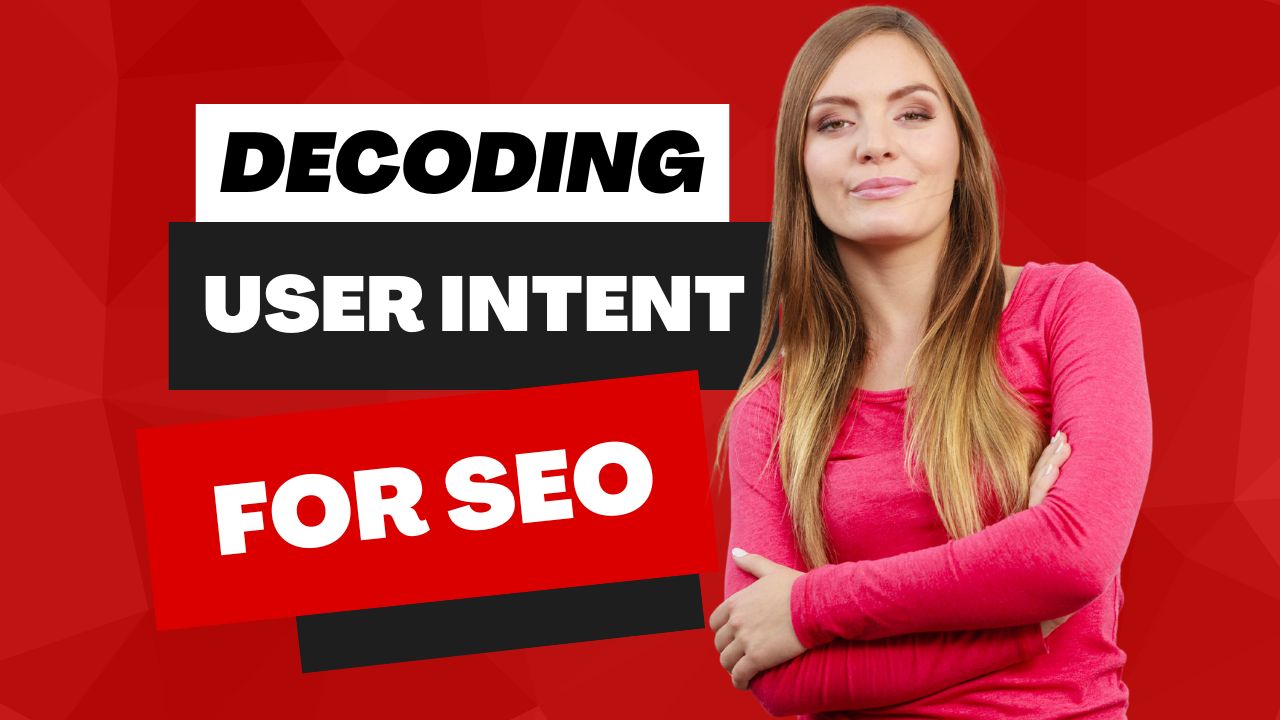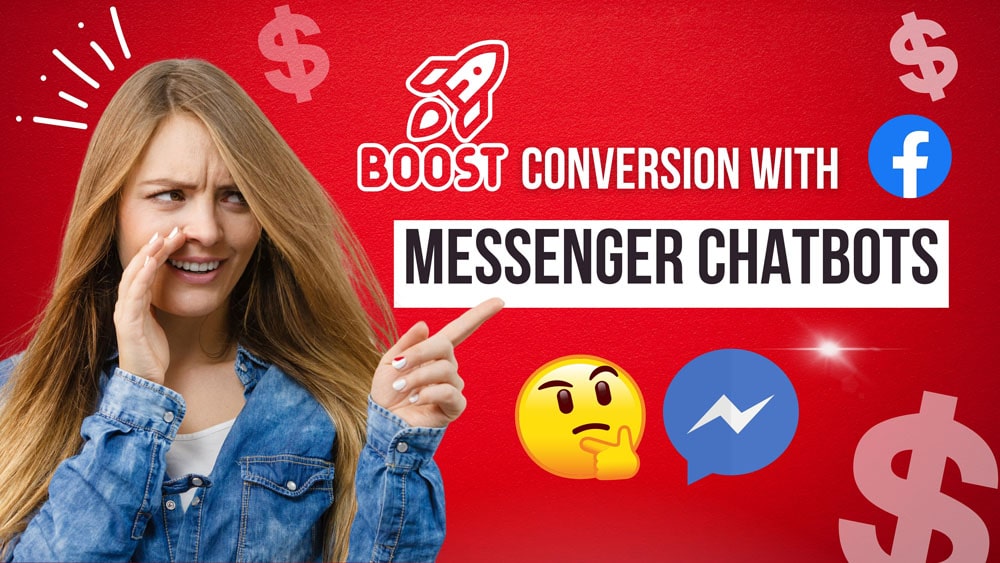Digital Marketing
Our team have put together a guide to Digital Marketing which has been updated for 2024. You can simply click on any of the “Jump to” links to head directly to any points of interest.
I. Introduction. [Jump to]
- Overview of digital marketing.
- Importance of digital marketing in today’s world.
II. Understanding the Basics of Digital Marketing. [Jump to]
- Digital Marketing Terminology.
- The concept of Inbound and Outbound marketing.
- The difference between digital marketing and traditional marketing.
III. Components of Digital Marketing. [Jump to]
- SEO (Search Engine Optimization)
- SEM (Search Engine Marketing)
- Content Marketing
- Social Media Marketing
- Email Marketing
- Affiliate Marketing
- Mobile Marketing
- Video Marketing
IV. Deep Dive into Each Component. [Jump to]
- SEO: Keyword Research, On-page SEO, Off-page SEO, Technical SEO, Local SEO
- SEM: PPC Advertising, Google Ads, Bing Ads
- Content Marketing: Blogging, Infographics, Podcasts, Webinars
- Social Media Marketing: Facebook, Instagram, LinkedIn, Twitter, Pinterest
- Email Marketing: Newsletters, Automated Email Campaigns
- Affiliate Marketing: How it works, popular platforms
- Mobile Marketing: App-based marketing, In-game mobile marketing, SMS
- Video Marketing: YouTube Marketing, Facebook Video Ads, Webinars
V. Building a Digital Marketing Strategy. [Jump to]
- Define Your Objectives
- Understand Your Audience
- Conduct a Competitor Analysis
- Choose Your Digital Marketing Channels
- Create a Content Strategy
- Optimize for SEO
- Leverage SEM for Immediate Visibility
- Engage Your Audience with Social Media and Email Marketing
- Measure Your Results
VI. Implementing a Digital Marketing Strategy. [Jump to]
- Practical steps to get started.
- Tools and software for digital marketing.
- Hiring and team structure for digital marketing.
VII. Future Trends in Digital Marketing. [Jump to]
- AI in digital marketing.
- Voice search.
- Augmented Reality (AR) and Virtual Reality (VR) in digital marketing.
- The rise of chatbots.
- Influencer marketing.
VIII. Conclusion. [Jump to]
- Recap of the guide.
- Call to action: What to do next?
IX. About TWV Media. [Jump to]
- Who we are.
- Our expertise and achievements.
- How we can help with your digital marketing needs.
I. Introduction. [Back]
Digital marketing has evolved into a pivotal aspect of modern business strategies, influencing the success and growth of businesses globally. As our world increasingly becomes a digital landscape, understanding and harnessing the power of digital marketing is not merely an advantageous skill—it’s a necessity. This article provides an overview of digital marketing and delves into its paramount importance in today’s world.
Overview of digital marketing.
At its core, digital marketing encompasses all marketing efforts that utilize the internet or electronic devices. With an array of strategies including search engine optimization (SEO), content marketing, social media marketing, pay-per-click (PPC), affiliate marketing, email marketing, and more, it aims to reach prospective customers through various digital channels.
Unlike traditional marketing, which relies on direct mail, print ads, broadcast media, and more, digital marketing thrives in the online space—a space where over 4.9 billion people worldwide are estimated to dwell in 2023. This expansive reach is part of what makes digital marketing so impactful, but it’s only the tip of the iceberg.
The Importance of Digital Marketing in Today’s World
1. Global Reach and Accessibility
Digital marketing tears down geographic barriers that inhibit the reach of traditional marketing, providing businesses with access to wider and more diverse audiences. With the internet’s global reach, products and services can be marketed to virtually any place on Earth, dramatically expanding potential customer bases.
2. Cost Efficiency
Start-ups and small businesses often struggle to compete with larger corporations in traditional advertising due to budget constraints. Digital marketing, however, levels the playing field. With strategies like SEO or social media marketing, businesses can reach a broad audience and achieve significant impact without the exorbitant costs associated with traditional advertising methods.
3. Personalization and Engagement
Digital marketing enables a level of personalization that’s nearly impossible to achieve in traditional marketing. By collecting and analysing data, businesses can create personalized content and ads that cater to the individual preferences and behaviours of their customers. Moreover, digital platforms allow real-time interaction, fostering higher engagement and building stronger relationships with customers.
4. Measurability and Optimization
One of the most potent advantages of digital marketing is the ability to track and measure results. Unlike traditional marketing, where the impact of a campaign can be challenging to determine, digital marketing allows for detailed tracking and analytics. This data-driven approach provides businesses with invaluable insights into what’s working and what’s not, enabling them to refine and optimize their strategies continually.
5. Aligning with Consumer Behaviour
With the proliferation of smartphones and other digital devices, consumers are spending a growing amount of time online. They research products, check reviews, and make purchases online. By meeting potential customers where they are—on the internet—digital marketing aligns seamlessly with modern consumer behaviour.
II. Understanding the Basics of Digital Marketing. [Back]
Digital Marketing Terminology.
Digital marketing, like any specialised field, comes with its own lexicon. Understanding the fundamental terminology is the first step towards mastering the discipline:
- SEO (Search Engine Optimization): This involves improving a website’s visibility and ranking on search engine results pages.
- SEM (Search Engine Marketing): This refers to marketing strategies that involve paid advertising on search engines.
- PPC (Pay-Per-Click): This is a type of online advertising where advertisers pay a fee each time their ad is clicked.
- CTR (Click Through Rate): The percentage of users who click on a specific link among the total users who view a page, email, or advertisement.
- CRO (Conversion Rate Optimization): The process of increasing the percentage of website visitors who complete a desired action.
- CPC (Cost Per Click): The price paid by an advertiser for each click in a pay-per-click (PPC) marketing campaign.
- CPM (Cost Per Mille/Thousand): The price of 1,000 advertisement impressions on a webpage.
- KPI (Key Performance Indicator): A measurable value that demonstrates how effectively a company is achieving key business objectives.
The concept of Inbound and Outbound marketing.
Digital marketing strategies can be broadly categorized into inbound and outbound marketing.
Inbound marketing is a business methodology that attracts customers by creating valuable content and experiences tailored to them. It forms connections they’re looking for and solves problems they already have. Tactics include content marketing, SEO, and social media marketing.
Outbound marketing, on the other hand, is a more traditional method that involves pushing out a message, whether or not the audience is seeking it. Tactics include TV commercials, print advertisements, cold-calling, and direct mail.
The difference between digital marketing and traditional marketing.
Digital and traditional marketing both aim to generate leads and convert them into customers. However, they differ in the following ways:
1. Medium: Traditional marketing uses mediums like print, television, and radio, while digital marketing operates via online channels such as search engines, websites, social media, email, and mobile apps.
2. Reach: Traditional marketing often has a local or regional reach. In contrast, digital marketing can reach a global audience.
3. Interaction: Traditional marketing is a one-way conversation, with businesses broadcasting their message. Digital marketing, however, allows for two-way communication, engagement, and instant feedback.
4. Measurability: With traditional marketing, it’s challenging to measure the effectiveness of a campaign. Digital marketing offers detailed analytics, enabling businesses to measure campaign effectiveness in real-time and make necessary adjustments.
5. Cost: Traditional marketing, with its physical materials and media space, can be costly. Digital marketing often presents a more cost-effective alternative, especially for small and medium-sized businesses.
III. Components of Digital Marketing. [Back]
Digital marketing is like a well-orchestrated symphony, where each instrument—or in this case, component—plays a crucial role. Let’s explore the integral parts that make up this symphony.
SEO (Search Engine Optimization): This involves optimizing your online content so that a search engine prefers to show it as a top result for searches of certain keywords. The goal of SEO is to increase the quality and quantity of organic traffic to your website.
SEM (Search Engine Marketing): This refers to paid efforts to gain visibility on search engines, such as Google Ads or Bing Ads. Unlike SEO, which focuses on organic traffic, SEM revolves around paid traffic and involves strategies like PPC (Pay-Per-Click).
Content Marketing: This revolves around the creation and distribution of valuable, relevant content to attract and engage a clearly defined audience, with the objective of driving profitable customer action. It involves different formats, such as blog posts, e-books, webinars, and infographics.
Social Media Marketing: This involves promoting your content and interacting with consumers on social media channels like Facebook, Instagram, Twitter, LinkedIn, and Pinterest. It’s a powerful way for businesses to reach their customers and personalize their marketing efforts.
Email Marketing: This is a direct form of marketing that uses email to promote products or services. It helps businesses nurture relationships with leads and customers, providing them with value through tailored content.
Affiliate Marketing: This is a performance-based marketing strategy where businesses pay a commission for each customer or lead brought about by the affiliate’s own marketing efforts. It’s a mutually beneficial partnership between advertisers and affiliates.
Mobile Marketing: This refers to promotional activities designed for delivery to cell phones, smartphones, and other handheld devices. It includes tactics like SMS marketing, in-app advertising, and mobile search ads.
Video Marketing: This involves using videos to promote and market your product or service, increase engagement on your digital and social channels, educate your consumers and customers, and reach your audience with a new medium.
IV. Deep Dive into Each Component. [Back]
SEO: Keyword Research, On-page SEO, Off-page SEO, Technical SEO, Local SEO
Search Engine Optimization is a nuanced field with several sub-components.
- Keyword Research: This is the process of finding and analyzing search terms that people enter into search engines with the aim of using that data for specific purposes, such as SEO or marketing.
- On-Page SEO: This focuses on optimizing individual webpages in order to rank higher and earn more relevant traffic in search engines.
- Off-Page SEO: This involves activities you perform outside the boundaries of your website to improve your rankings within search engine results pages.
- Technical SEO: This focuses on the backend of your website, like site speed, mobile-friendliness, and indexing, to improve search engine ranking.
- Local SEO: This is an effective way to market your local business online and helps companies promote their products and services to local customers at the exact time they’re looking for them online.
SEM: PPC Advertising, Google Ads, Bing Ads
Search Engine Marketing revolves primarily around paid efforts to gain visibility on search engines.
- PPC Advertising: This model of internet marketing involves advertisers paying a fee each time one of their ads is clicked.
- Google Ads: This is an online advertising platform where advertisers bid to display brief ads, service offerings, product listings, or videos to web users.
- Bing Ads: Similar to Google Ads, this service provides pay per click advertising on both the Bing and Yahoo search engines.
Content Marketing: Blogging, Infographics, Podcasts, Webinars
Content marketing is all about providing value to attract, engage, and retain an audience.
- Blogging: This involves regularly publishing articles on your website to educate your audience, answer questions, and provide value.
- Infographics: These are graphic visual representations of information or data intended to present complex information quickly and clearly.
- Podcasts: A series of spoken-word content which users can download or stream online.
- Webinars: These are live, virtual events that are executed online. They are highly interactive, looking to educate and build relationships with potential customers.
Social Media Marketing: Facebook, Instagram, LinkedIn, Twitter, Pinterest
Social media marketing is about reaching and engaging with your audience on social media platforms.
- Facebook: Businesses can leverage Facebook’s vast user base and hyper-targeted advertising options.
- Instagram: This platform is perfect for businesses with strong visual content and stories to share.
- LinkedIn: A must-have platform for B2B businesses and professional networking.
- Twitter: Great for sharing updates, engaging with followers, and managing customer service.
- Pinterest: An excellent platform for businesses with visually appealing products or ideas.
Email Marketing: Newsletters, Automated Email Campaigns
Email marketing involves using email to develop relationships with potential customers or clients.
Newsletters: Regularly sent emails that keep your audience informed about news, tips, or updates about your business.
Automated Email Campaigns: These are triggered email messages that are sent to subscribers automatically based on certain actions or behaviour.
Affiliate Marketing: How it works, popular platforms
Affiliate marketing involves partnering with influencers or other websites to promote your products or services. Businesses provide unique links to their affiliates. Affiliates then promote the business, earning a commission on any sales that come from their unique link.
- Affiliate Networks: These are platforms that connect businesses with potential affiliates. Examples include CJ Affiliate, Amazon Associates, and ShareASale.
- Influencer Partnerships: Working with influencers can give your products or services broader exposure to their loyal audience.
Mobile Marketing: App-based marketing, In-game mobile marketing, SMS
Mobile marketing involves marketing strategies aimed at reaching a target audience on their smartphones, tablets, or other mobile devices.
- SMS Marketing: This is a technique that uses permission-based text messaging to spread promotional messages.
- App-Based Marketing: This involves advertising your business through mobile apps.
- Mobile Search Ads: These are basic Google search ads built for mobile, often featuring extra add-on extensions like click-to-call or maps.
Video Marketing: YouTube Marketing, Facebook Video Ads, Webinars
Video marketing uses video to promote your brand, increase engagement, and drive sales.
- Explainer Videos: These are short online marketing videos used to explain your company’s product or service.
- Live Videos: Live streaming on platforms like Facebook, Instagram, or LinkedIn can help you engage with your audience in real-time.
- Webinars: Hosting online seminars can be a great way to share knowledge, present a new product, or explain the benefits of your service.
V. Building a Digital Marketing Strategy. [Back]
The power of digital marketing lies not just in its individual components but how they are orchestrated to create compelling strategies. A well-planned digital marketing strategy is instrumental in determining the success of your online presence and ultimately, your business. This article presents an in-depth guide to planning and implementing digital marketing strategies, ensuring your business achieves its online objectives effectively.
Creating an effective digital marketing strategy involves a sequence of steps that ensures your efforts are targeted and measurable. These steps include:
Define Your Objectives
A clear objective sets the direction for your strategy. Are you looking to increase brand awareness? Drive more traffic to your website? Boost sales or leads? The answers to these questions help you set SMART (Specific, Measurable, Achievable, Relevant, Time-bound) goals, which provide a clear vision for your strategy.
Understand Your Audience
Knowing your audience is paramount in digital marketing. You need to understand their needs, preferences, behavior, and online habits. Creating buyer personas—semi-fictional representations of your ideal customers—can help you tailor your strategy to meet your audience’s needs effectively.
Conduct a Competitor Analysis
Analysing your competitors’ digital marketing strategies can provide valuable insights into what works and what doesn’t in your industry. Tools like SEMRush and Ahrefs can help you see what keywords your competitors are targeting, where they’re getting their backlinks, and more.
Choose Your Digital Marketing Channels
Depending on your audience and objectives, you’ll need to select the right digital marketing channels. These could include SEO, SEM, content marketing, social media marketing, email marketing, affiliate marketing, mobile marketing, and video marketing.
Create a Content Strategy
Your content strategy should be designed to meet your goals and appeal to your audience. This involves choosing the right types of content (blogs, infographics, videos, podcasts, etc.), creating a content calendar, and deciding on the frequency of posting.
Optimize for SEO
Optimizing your content for search engines helps increase your online visibility. This involves keyword research, on-page optimization (using keywords in your content, meta descriptions, title tags, etc.), and off-page optimization (building quality backlinks).
Leverage SEM for Immediate Visibility
Search engine marketing, especially PPC advertising, can offer immediate online visibility while you build your organic reach with SEO. With PPC, you can control which keywords you want to bid on and how much you want to spend.
Engage Your Audience with Social Media and Email Marketing
Social media platforms are great for engaging your audience and building relationships. Meanwhile, email marketing allows for direct communication and personalized messages.
Measure Your Results
Finally, tracking your results is crucial for understanding the success of your digital marketing strategy. Tools like Google Analytics can help measure website traffic, bounce rates, conversion rates, and more.
VI. Implementing Digital Marketing Strategy. [Back]
Practical steps to get started.
- Define Your Goals: Begin by outlining clear, measurable objectives that align with your business goals. Whether it’s increasing website traffic, improving conversion rates, or boosting brand awareness, having defined goals will guide your strategy and provide a benchmark for measuring success.
- Understand Your Audience: Research your target audience to understand their needs, preferences, online behaviours, and purchasing habits. Creating detailed buyer personas can help you tailor your marketing efforts to effectively engage your audience.
- Analyse Your Competitors: By assessing your competitors’ digital marketing strategies, you can identify gaps in the market, discover effective tactics, and differentiate your brand.
- Choose Your Channels: Decide which digital marketing channels are most effective for reaching your audience. These could include SEO, PPC, social media marketing, email marketing, content marketing, or video marketing.
- Create a Content Plan: Develop a content strategy aligned with your audience’s needs and interests. Establish a content calendar to ensure consistent output across your chosen channels.
- Monitor and Adjust: Regularly analyse your marketing efforts to assess what’s working and what’s not. Use these insights to refine your strategy and optimize for better results.
Tools and software for digital marketing.
The right tools can streamline your digital marketing efforts and provide valuable insights. Here are a few essentials:
- Google Analytics: This free tool provides detailed insights into your website’s traffic, user behavior, and conversion metrics, enabling you to optimize your strategy.
- SEMrush: This comprehensive tool offers a range of features for SEO, including keyword research, competitor analysis, and website audits.
- Hootsuite or Buffer: These tools help manage and schedule posts across multiple social media platforms, saving time and ensuring consistency.
- Mailchimp or Constant Contact: For email marketing, these platforms offer features for creating, sending, and analyzing email campaigns.
- Canva: This user-friendly tool is great for creating visually appealing content for social media, blogs, and emails.
- HubSpot: This all-in-one platform offers tools for inbound marketing, including CRM, email marketing, content management, and analytics.
Hiring and team structure for digital marketing.
Building a competent digital marketing team is crucial to implementing a successful strategy. Here are some roles you may consider:
- Digital Marketing Manager: This person oversees the strategy and coordinates the team’s efforts.
- SEO Specialist: An expert in SEO who can optimize your website to improve organic search rankings.
- Content Manager/Writer: Responsible for creating and managing high-quality content that aligns with your strategy.
- Social Media Manager: Manages your brand’s presence across social media platforms.
- PPC Specialist: Oversees your paid advertising efforts, primarily on search and social media platforms.
- Email Marketing Specialist: Manages your email campaigns, including segmentation, personalization, and analysis.
- Graphic Designer: Creates visually engaging content for your website, social media, and other platforms.
- Data Analyst: Interprets marketing data to provide actionable insights for strategy refinement.
VII. Future Trends in Digital Marketing. [Back]
The digital marketing landscape is dynamic, continuously evolving as innovative technologies and trends redefine how businesses engage with their audience. As we peer into the future of digital marketing, certain key trends are emerging that promise to shape this field profoundly. This article delves into these trends, which include the use of artificial intelligence (AI), voice search, augmented reality (AR) and virtual reality (VR), the rise of chatbots, and the enduring impact of influencer marketing.
AI in digital marketing.
Artificial Intelligence (AI) is revolutionizing digital marketing by automating processes, personalizing customer interactions, and providing valuable insights from complex data. AI-powered tools can analyse user behaviour, preferences, and search patterns to help businesses understand their audience better and create personalized experiences. For instance, predictive analytics can recommend products based on a customer’s browsing history, while chatbots can offer personalized assistance to improve customer service. Looking ahead, AI’s role in digital marketing will only grow, driving efficiency, personalization, and data-driven decision-making.
Voice search.
The rise of voice-activated devices like Amazon Alexa, Google Home, and Apple’s Siri has fueled the growth of voice search. With more people using voice commands to search the internet, businesses need to optimize their digital marketing strategies for voice search. This involves focusing on conversational keywords and phrases and providing concise, direct answers to potential voice queries. As the technology improves and adoption increases, voice search will become an essential component of SEO strategies.
Augmented Reality (AR) and Virtual Reality (VR) in digital marketing.
Augmented Reality (AR) and Virtual Reality (VR) offer exciting new ways to engage customers. AR overlays digital information on the real world, allowing customers to virtually try on products or see how furniture might look in their home. Meanwhile, VR provides immersive experiences, transporting users to different settings or situations. These technologies can enhance customer experiences, drive engagement, and facilitate informed purchasing decisions. As AR and VR technology becomes more accessible, businesses will have unique opportunities to create interactive, immersive marketing campaigns.
The rise of chatbots.
Chatbots are becoming a staple in digital marketing, providing real-time, personalized customer service. Using AI, chatbots can understand customer queries, provide relevant information, and even handle basic transactions. This not only improves customer satisfaction but also frees up human resources to focus on more complex tasks. As AI continues to advance, chatbots will become more sophisticated, handling more complex interactions and providing even more value to businesses and customers alike.
Influencer marketing.
Influencer marketing remains a powerful trend in digital marketing. Leveraging the reach and credibility of influencers, businesses can authentically connect with their audience and boost brand awareness. In the future, we can expect to see a continued shift towards micro-influencers, who have smaller but more engaged audiences. Furthermore, as social media platforms introduce new e-commerce features, influencers will play a crucial role in driving direct sales.
VIII. Conclusion. [Back]
Recap of the guide.
Understanding Digital Marketing and Its Importance
The guide started with an exploration of digital marketing, its fundamental elements, and its significance in today’s digital age. It highlighted how digital marketing enables businesses to reach a global audience, engage with customers interactively, and measure their marketing efforts with precision.
Fundamentals of SEO
Next, the guide delved into the basics of Search Engine Optimization (SEO), a crucial digital marketing tactic. The importance of keyword research, on-page and off-page SEO, and the role of quality content in boosting search engine rankings were underscored.
The Power of Content Marketing
Content marketing was discussed as a powerful way to engage audiences, boost brand reputation, and improve SEO. The guide emphasized the importance of understanding your audience, delivering valuable content, and maintaining consistency.
Role of Social Media in Digital Marketing
The guide then explored social media as a vital platform for promoting brands, engaging with audiences, and boosting conversions. It outlined the importance of choosing the right social media platforms, creating engaging content, and interacting with followers.
Understanding PPC Advertising
Pay-Per-Click (PPC) advertising was identified as a valuable method for driving targeted traffic to websites. The guide highlighted the basics of PPC, including keyword research, ad creation, and conversion tracking.
The Future of Digital Marketing
The guide discussed emerging trends in digital marketing, including the growing role of AI, the emergence of voice search, the potential of AR and VR, the rise of chatbots, and the continued impact of influencer marketing.
Implementing a Digital Marketing Strategy
Here, the guide offered a roadmap for implementing a digital marketing strategy, including practical steps to get started, essential tools and software, and advice on hiring and structuring a digital marketing team.
Conclusion and Call to Action
Finally, the guide concluded with a call to action, urging readers to review and revise their digital marketing strategies, stay informed about emerging trends, invest in training and development, experiment and innovate, and consistently measure, analyse, and optimize their efforts.
The end of this guide is merely the beginning of a journey towards mastering digital marketing, offering a springboard to propel businesses into the digital age with confidence and agility.
Call to action: What to do next?
After reading through this guide, understanding the intricacies of digital marketing, and becoming familiar with its tools and strategies, you might be wondering, what’s next? Here’s the all-important call to action—your next steps on your digital marketing journey.
- Review and Revise Your Digital Marketing Strategy: The first step is to assess your current strategy. Is it aligned with your business goals? Are you reaching your target audience effectively? Are you leveraging the right channels and tools? Don’t hesitate to revise your strategy based on what you’ve learned from this guide.
- Stay Informed About Emerging Trends: Digital marketing is continuously evolving, with new trends and technologies shaping its landscape. Make it a point to stay updated about these changes and consider how you can incorporate them into your strategy.
- Invest in Training and Development: To implement effective digital marketing strategies, you need the right skills and knowledge. Consider investing in training for yourself and your team, whether through online courses, workshops, or webinars.
- Experiment and Innovate: Don’t be afraid to try new things in your digital marketing efforts. Whether it’s experimenting with different content types, exploring new marketing channels, or using innovative technologies like AI or VR, a little creativity can go a long way.
- Measure, Analyse, Optimize: Remember that digital marketing is a cyclical process. Regularly measure your results, analyse your performance, and optimize your strategy based on your findings. This will ensure you’re continually improving and getting the most out of your digital marketing efforts.
IX. About TWV Media. [Back]
Who we are.
We at TWV Media are a boutique media and marketing agency who work with clients of all sizes and sectors.
How we can help with your digital marketing needs.
In short, we can help you with everything discussed in this document. We sincerely hope that gives you a much fuller understanding of all of the topics discussed, but we of course would love to hear from you and to work with you in the future.






